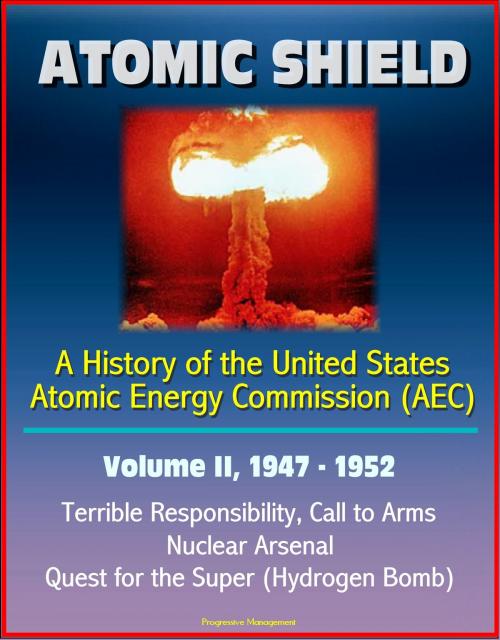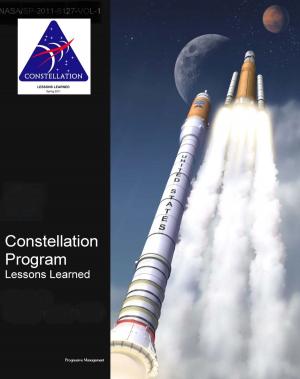Atomic Shield: A History of the United States Atomic Energy Commission (AEC) - Volume II, 1947-1952 - Terrible Responsibility, Call to Arms, Nuclear Arsenal, Quest for the Super (Hydrogen Bomb)
Nonfiction, History, Military, Nuclear Warfare| Author: | Progressive Management | ISBN: | 9781301043675 |
| Publisher: | Progressive Management | Publication: | March 30, 2013 |
| Imprint: | Smashwords Edition | Language: | English |
| Author: | Progressive Management |
| ISBN: | 9781301043675 |
| Publisher: | Progressive Management |
| Publication: | March 30, 2013 |
| Imprint: | Smashwords Edition |
| Language: | English |
This is the second volume of the highly regarded official history of the birth of the atomic age and the Atomic Energy Commission (AEC) dealing with the years from 1947 through 1952. Atomic Shield, the second volume in a historical series, begins in January, 1947, when the Commission assumed responsibility for the nation's atomic energy program; it ends with the detonation of the first thermonuclear device and the Presidential election in November, 1952. Thus it covers in a political sense most of the Truman Administration and in the international realm the chaotic years of the Marshall Plan, the Berlin blockade, and the Korean War. In 1947 the nation's atomic energy establishment amounted to little more than the remnants of the military organization and facilities which had produced the world's first atomic weapons. By the end of 1952 the Commission's domain included an arsenal of nuclear weapons, a refurbished and greatly enlarged complex of research and production facilities, and a dozen experimental or research reactors.
CHAPTER 1 * TERRIBLE RESPONSIBILITY * Historical setting * CHAPTER 2 * UNCERTAIN MANDATE * CHAPTER 3 * FIRST VENTURE * Weapon research and production, early 1947 * CHAPTER 4 * PEACEFUL IMAGE * accelerators and basic research; Clinton crisis, December, 1947 * CHAPTER 5 * CALL TO ARMS * early plans for Sandstone tests; production at Hanford and Oak Ridge; response to growing crisis in Europe * CHAPTER 6 * NUCLEAR ARSENAL * raw materials procurement; progress at Los Alamos and Sandia, 1948; new weapon requirements * CHAPTER 7 * ATOMIC POWER: QUANDARY AND QUAGMIRE * aircraft and naval propulsion; Wilson's reactor plan; reactor safeguards; Hafstad and four-reactor program, 1948-1949 * CHAPTER 8 * RESEARCH: NEW APPROACHES TO A NEW AGE * high-energy physics, 1946-1948; discovery of transplutonium elements; radiation biology and studies in Japan; meson; bevatron and cosmotron; radioisotopes, cancer research, and studies of radiation effects * CHAPTER 9 * COOPERATION WITH BRITISH: UNTANGLING ALLIANCE * exchanging technical information * CHAPTER 10 * COOPERATION WITH BRITISH: ANXIETY AND TENSION * Cyril Smith affair and breakdown of cooperation; formulating a new policy, 1948-1949; search for Congressional support, 1949; negotiations with British, autumn, 1949; Fuchs and failure, 1950 * CHAPTER 11 * ART OF ADMINISTRATION * Hickenlooper investigations, summer, 1949 * CHAPTER 12 * DECISION OF DESTINY * Soviet detonation, August, 1949; detection and decision to announce, September, 1949; pressure for superweapon; Lilienthal's decision to resign; Joint Committee initiatives; Presidential decision, January 31, 1950 * CHAPTER 13 * TWILIGHT ZONE, FEBRUARY-JUNE, 1950 * decisions on weapons development; reactor development for defense; plans for producing nuclear materials; place of basic and independent research in national security; declining prospects for Super at Los Alamos * CHAPTER 14 * CHANGING PATTERNS OF ADMINISTRATION * Changing role of Commissioners, 1949-1950; search for a new chairman, 1950; labor relations, 1949- 1950; changing requirements in security to 1950; community policy, 1947-1950; Dean's appointment as chairman and Wilson's resignation; labor and security in Korean war * CHAPTER 15 * SCIENCE: SHIELD OF FREE WORLD? * Impact of Korean war on research and development, 1950; reactors for military; new goals for reactor development, 1951; research in shadow of war; advances in high-energy physics, chemistry, radiation biology, and genetics; reactors for propulsion, plutonium production, and power generation; Oppenheimer's retirement * CHAPTER 16 * QUEST FOR SUPER * difficulties in developing Super; Savannah River and Paducah sites; effects of Chinese intervention in Korea; Ulam, Teller; a break in civilian custody of weapons * CHAPTER 17 * FORGING ATOMIC SHIELD
This is the second volume of the highly regarded official history of the birth of the atomic age and the Atomic Energy Commission (AEC) dealing with the years from 1947 through 1952. Atomic Shield, the second volume in a historical series, begins in January, 1947, when the Commission assumed responsibility for the nation's atomic energy program; it ends with the detonation of the first thermonuclear device and the Presidential election in November, 1952. Thus it covers in a political sense most of the Truman Administration and in the international realm the chaotic years of the Marshall Plan, the Berlin blockade, and the Korean War. In 1947 the nation's atomic energy establishment amounted to little more than the remnants of the military organization and facilities which had produced the world's first atomic weapons. By the end of 1952 the Commission's domain included an arsenal of nuclear weapons, a refurbished and greatly enlarged complex of research and production facilities, and a dozen experimental or research reactors.
CHAPTER 1 * TERRIBLE RESPONSIBILITY * Historical setting * CHAPTER 2 * UNCERTAIN MANDATE * CHAPTER 3 * FIRST VENTURE * Weapon research and production, early 1947 * CHAPTER 4 * PEACEFUL IMAGE * accelerators and basic research; Clinton crisis, December, 1947 * CHAPTER 5 * CALL TO ARMS * early plans for Sandstone tests; production at Hanford and Oak Ridge; response to growing crisis in Europe * CHAPTER 6 * NUCLEAR ARSENAL * raw materials procurement; progress at Los Alamos and Sandia, 1948; new weapon requirements * CHAPTER 7 * ATOMIC POWER: QUANDARY AND QUAGMIRE * aircraft and naval propulsion; Wilson's reactor plan; reactor safeguards; Hafstad and four-reactor program, 1948-1949 * CHAPTER 8 * RESEARCH: NEW APPROACHES TO A NEW AGE * high-energy physics, 1946-1948; discovery of transplutonium elements; radiation biology and studies in Japan; meson; bevatron and cosmotron; radioisotopes, cancer research, and studies of radiation effects * CHAPTER 9 * COOPERATION WITH BRITISH: UNTANGLING ALLIANCE * exchanging technical information * CHAPTER 10 * COOPERATION WITH BRITISH: ANXIETY AND TENSION * Cyril Smith affair and breakdown of cooperation; formulating a new policy, 1948-1949; search for Congressional support, 1949; negotiations with British, autumn, 1949; Fuchs and failure, 1950 * CHAPTER 11 * ART OF ADMINISTRATION * Hickenlooper investigations, summer, 1949 * CHAPTER 12 * DECISION OF DESTINY * Soviet detonation, August, 1949; detection and decision to announce, September, 1949; pressure for superweapon; Lilienthal's decision to resign; Joint Committee initiatives; Presidential decision, January 31, 1950 * CHAPTER 13 * TWILIGHT ZONE, FEBRUARY-JUNE, 1950 * decisions on weapons development; reactor development for defense; plans for producing nuclear materials; place of basic and independent research in national security; declining prospects for Super at Los Alamos * CHAPTER 14 * CHANGING PATTERNS OF ADMINISTRATION * Changing role of Commissioners, 1949-1950; search for a new chairman, 1950; labor relations, 1949- 1950; changing requirements in security to 1950; community policy, 1947-1950; Dean's appointment as chairman and Wilson's resignation; labor and security in Korean war * CHAPTER 15 * SCIENCE: SHIELD OF FREE WORLD? * Impact of Korean war on research and development, 1950; reactors for military; new goals for reactor development, 1951; research in shadow of war; advances in high-energy physics, chemistry, radiation biology, and genetics; reactors for propulsion, plutonium production, and power generation; Oppenheimer's retirement * CHAPTER 16 * QUEST FOR SUPER * difficulties in developing Super; Savannah River and Paducah sites; effects of Chinese intervention in Korea; Ulam, Teller; a break in civilian custody of weapons * CHAPTER 17 * FORGING ATOMIC SHIELD















